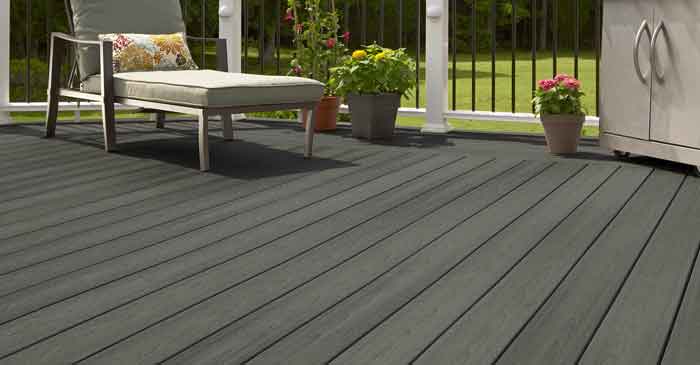
Timber and composite decking have become increasingly popular options for outdoor living spaces, providing homeowners with versatile, durable, and aesthetically pleasing alternatives to traditional patio surfaces. Whether used for a cozy backyard retreat, a sprawling deck overlooking scenic landscapes, or a stylish outdoor entertainment area, both timber and composite decking offer unique advantages and considerations for homeowners to explore. See alos our blog post on composite decking fitters Stirling.
Timber decking, often made from hardwoods such as oak, cedar, or tropical species like teak and ipe, has been a popular choice for outdoor decking for centuries. Renowned for its natural beauty, warmth, and character, timber decking adds a touch of rustic elegance to any outdoor setting. Each timber board is unique, with variations in grain patterns, color tones, and texture, giving each deck its distinct personality.
One of the key benefits of timber decking is its natural resistance to the elements. Hardwood species are naturally durable and resistant to decay, insect infestation, and rot, making them well-suited for outdoor use without the need for chemical treatments. Additionally, timber decking ages gracefully, developing a beautiful patina over time that enhances its visual appeal.
However, timber decking requires regular maintenance to preserve its beauty and longevity. Periodic sealing, staining, or oiling is necessary to protect the wood from moisture, UV radiation, and fungal growth. Without proper maintenance, timber decking may warp, crack, or fade, compromising its structural integrity and aesthetic appeal.
In contrast, composite decking offers a low-maintenance alternative to timber, combining wood fibers with recycled plastic materials to create a durable, weather-resistant decking material. Composite decking boards are engineered to mimic the look and feel of natural wood, with a wide range of colors, textures, and finishes available to suit any design aesthetic.
One of the primary advantages of composite decking is its minimal maintenance requirements. Unlike timber decking, composite boards do not require sealing, staining, or painting to maintain their appearance. They are resistant to moisture, mold, mildew, and insect damage, making them ideal for homeowners seeking a hassle-free outdoor living solution.

Composite decking is also highly durable and long-lasting, with many manufacturers offering warranties ranging from 10 to 25 years or more. The composite materials used in decking boards are engineered to withstand the rigors of outdoor exposure, including harsh weather conditions, heavy foot traffic, and UV radiation, without fading, warping, or splintering.
Another benefit of composite decking is its eco-friendly credentials. By utilizing recycled materials, such as plastic bags, bottles, and wood scraps, composite decking helps reduce the demand for virgin timber and plastic resources, contributing to environmental conservation efforts. Additionally, composite decking is often recyclable at the end of its lifespan, further minimizing its environmental impact.
While composite decking offers numerous advantages, it is essential to consider some potential drawbacks. Composite decking tends to be more expensive upfront than timber decking, making it less budget-friendly for some homeowners. Additionally, while composite decking boards mimic the look of natural wood, some people prefer the authentic beauty and warmth of timber decking.
Furthermore, while composite decking is resistant to staining and fading, it may still show signs of wear and tear over time, such as scratches or surface blemishes. While these issues are usually minor and can often be remedied with light sanding or cleaning, they are worth considering for homeowners seeking a pristine outdoor living space.
In conclusion, both timber and composite decking offer homeowners attractive and functional options for creating outdoor living spaces that enhance the beauty and functionality of their homes. Timber decking provides natural warmth, character, and authenticity, while composite decking offers durability, low maintenance, and eco-friendly benefits. By carefully considering the advantages and considerations of each option, homeowners can select the decking material that best suits their aesthetic preferences, budget, and lifestyle needs. Whether enjoying a quiet evening with family or entertaining guests at a summer barbecue, both timber and composite decking provide the perfect backdrop for outdoor enjoyment and relaxation.
ChatGPT can
